Avoid These 8 Common Pickleball Mistakes: Tips From The Pros
Introduction To Pickleball And Common Mistakes
Pickleball, the dynamic and addictive sport, has been captivating players of all ages and skill levels worldwide. As with any sport, mastering pickleball requires practice, patience, and a willingness to learn from mistakes. Even the most experienced players make errors from time to time, but by identifying and avoiding common mistakes, you can elevate your game and play like a pro. In this article, we will share insights from pickleball professionals on eight common mistakes to avoid and tips on how to improve your performance on the court.
1. Overreliance on Power
Understanding the Role of Power Shots
Power shots can be impressive and effective, especially when used at the right moment. However, relying solely on power can lead to several issues in your game. Hitting the ball too hard may result in unforced errors, as it becomes challenging to maintain control and accuracy when using excessive force.
Developing Control and Placement
To avoid overreliance on power, focus on developing control and placement in your shots. Work on perfecting your soft touch, which allows you to hit the ball gently and place it precisely where you want it to go. Learning to finesse the ball with soft dinks, drops, and lobs will help you maintain control during rallies and create strategic opportunities to outmaneuver your opponents.
Balancing Power and Precision
While power shots can be effective during offensive plays, using them sparingly and strategically is key. Balancing power with precision ensures that you maintain control of the game and adapt to various situations effectively. Be selective in using power shots, and always consider the risks and benefits before attempting them.
2. Ignoring the Non-Volley Zone (NVZ) Rules
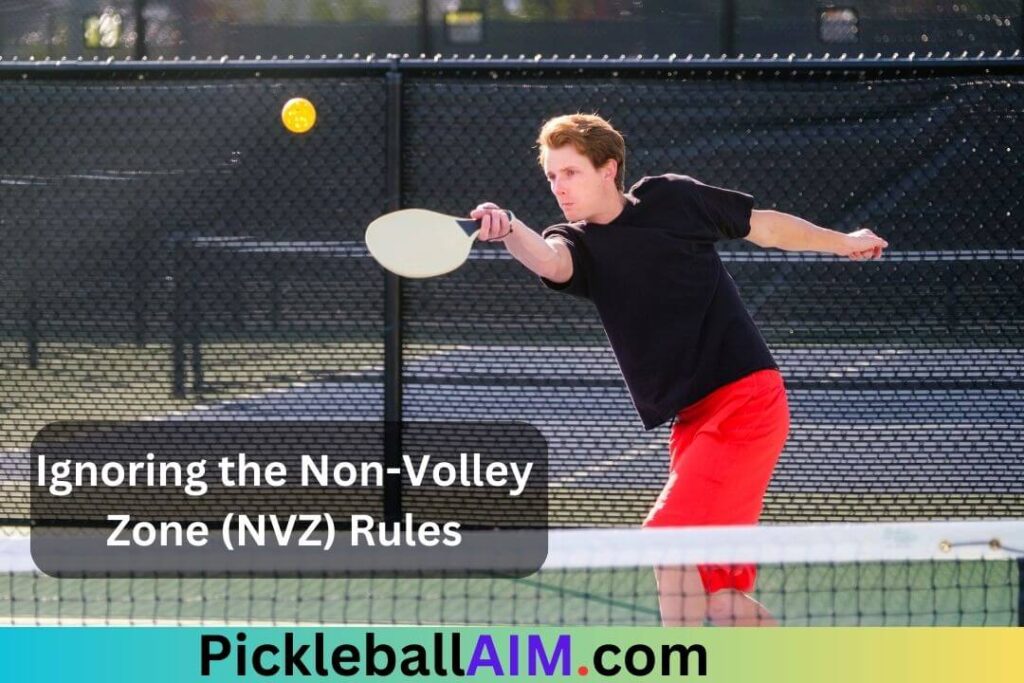
The Significance of the Non-Volley Zone
The Non-Volley Zone, a seven-foot area on both sides of the net, is a crucial aspect of pickleball that impacts the flow of the game. Players are not allowed to volley the ball (hit it in the air) while standing inside the NVZ. Ignoring these rules can lead to faults and lost points.
Mastering Footwork and Positioning
To avoid NVZ faults, practice your footwork and positioning when at the net. When volleying, make sure both feet are outside the NVZ, and step back immediately after hitting the ball. Maintaining proper footwork and positioning will help you stay within the rules and keep you prepared to respond to your opponent’s shots.
Strategically Engaging the NVZ
While you must be cautious about entering the NVZ, engaging it strategically can be advantageous. Use the NVZ to put pressure on your opponents and set up opportunities for offensive shots. Master the art of the “NVZ dance,” moving in and out of the zone skillfully to gain an edge over your opponents while avoiding faults.
3. Ineffective Shot Selection
Assessing the Court and Opponent
One of the most common mistakes in pickleball is making poor shot choices without considering the court dynamics and your opponent’s positioning. Before taking a shot, take a moment to assess the court. Look for open spaces where you can place the ball strategically. Observe your opponent’s positioning and identify their weaknesses to exploit. Sometimes, a well-placed, low-risk shot can be more effective than attempting a difficult shot that carries a higher chance of error.
Prioritizing Consistency and Placement
Consistency and placement are key elements of effective shot selection. Work on hitting shots that you are confident in executing consistently. Aim to place the ball where your opponent has difficulty reaching it, forcing them into uncomfortable positions. By prioritizing consistency and placement over power or fancy shots, you can minimize unforced errors and keep control of the point.
Avoiding Low-Percentage Shots
Be mindful of attempting low-percentage shots, such as high-speed passing shots or aggressive shots from difficult angles. While these shots may lead to spectacular winners, they are also riskier and more likely to result in errors. Save such shots for critical moments in the game when the potential reward outweighs the risk.
4. Poor Positioning During Dinking Exchanges

Importance of Net Presence
Dinking exchanges are crucial moments in pickleball that require players to maintain a strong net presence. Staying close to the net allows you to anticipate your opponent’s shots and react quickly. Being positioned near the NVZ also gives you the advantage of cutting off angles and forcing opponents into more challenging shots.
Balanced Stance and Quick Reflexes
During dinking exchanges, keep your body weight balanced and your knees slightly bent. This stance ensures stability and quickness in movement, enabling you to respond swiftly to your opponent’s shots. Stay light on your feet and be prepared to move in any direction to maintain control of the point.
Knowing When to Be Aggressive
While dinking is primarily a soft and controlled game, there are moments when you can be more aggressive. Look for opportunities to attack with a well-timed put-away shot when your opponent’s dinks provide an opening. Being able to transition from a defensive dinking position to an offensive attack will keep your opponents guessing and give you the upper hand in the rally. However, always return to a balanced dinking stance after making an aggressive play to maintain control.
By avoiding these common mistakes and implementing the tips shared by pickleball experts, you can elevate your game and make more informed decisions on the court. Remember that pickleball is a game of strategy, precision, and adaptability. Continuously learning from mistakes and refining your skills will make you a more formidable opponent and enhance your overall enjoyment of this thrilling sport.
5. Lack of Communication with Your Partner

The Importance of Teamwork
In doubles pickleball, effective communication with your partner is the foundation of successful teamwork. When players fail to communicate, it can lead to misunderstandings, overlapping movements, and missed opportunities. To maximize your potential as a team, establish clear and consistent communication throughout the game.
Develop a System of Signals
A simple system of signals can go a long way in ensuring smooth coordination with your partner. Before the game begins, discuss and agree on signals for specific situations, such as who will take the shot, when to switch sides, or when to go for an aggressive play. Non-verbal cues can be especially useful during the fast-paced action of a pickleball match, where verbal communication might not always be possible.
Use Verbal Cues Strategically
In addition to signals, verbal cues play a crucial role in on-court communication. Be vocal and encourage your partner with positive feedback. Communicate your intentions clearly, such as calling out “mine” to indicate that you will take the shot. Effective verbal communication not only enhances your teamwork but also boosts each other’s confidence on the court.
Stay Calm and Supportive
Pickleball is a game of ups and downs, and maintaining a supportive attitude towards your partner is vital. Avoid negative criticism and instead focus on constructive feedback. Keep the communication positive, even during challenging moments, as a cohesive and supportive partnership can turn the tide of a match.
6. Neglecting the Soft Game
Embrace the Soft Game’s Importance
The soft game, involving dinks and drop shots, is a fundamental aspect of pickleball that should not be neglected. It adds variety to your playing style and confuses your opponents. Neglecting the soft game can make you predictable, allowing your opponents to anticipate your shots and gain an advantage.
Work on Dinking Techniques
Dinking requires finesse and control rather than power. Develop your dinking technique by practicing soft shots that land close to the net. Focus on maintaining a gentle grip on the paddle and using a short, compact stroke. Consistency in your dinking will force your opponents to make difficult shots and create opportunities for you to take control of the point.
Master Drop Shots
Drop shots are another essential soft shot in pickleball. These shots are played with a bit more speed than dinks but still require precision. Practice dropping the ball just over the net and close to the NVZ, making it challenging for your opponents to reach the ball and respond effectively.
Vary Your Playing Style
A well-rounded player can seamlessly switch between power shots and soft shots, keeping opponents on their toes. Integrate the soft game into your strategy, and use it strategically to break your opponent’s rhythm and force them into uncomfortable positions. A versatile playing style will make you a more unpredictable and challenging opponent to face.
By addressing communication issues with your partner and embracing the soft game, you can improve your doubles play significantly. These adjustments will not only enhance your performance on the court but also make the game more enjoyable and rewarding as you work together to outmaneuver your opponents and achieve pickleball success.
7. Overcommitting to the Net

Understanding Offensive and Defensive Strategies
Pickleball is a game of strategy, and knowing when to be offensive and when to be defensive is crucial. Rushing to the net after every shot can leave you vulnerable to counterattacks from your opponents. While being aggressive at the net is essential for winning points, it’s equally important to recognize when to hold back and maintain a balanced position on the court.
Choose Strategic Moments to Approach the Net
Be selective about when to approach the net. After a successful third-shot drop or a well-placed dink, advancing to the net can be advantageous. However, when your opponents hit a lob or a powerful passing shot, consider staying back and preparing to defend. Being patient and choosing strategic moments to approach the net will help you stay in control of the point and respond effectively to your opponent’s shots.
Be Prepared to Retreat
Sometimes, overcommitting to the net can leave you out of position and unable to defend against a lob or passing shot. In such situations, be prepared to retreat quickly and regain a defensive stance. Staying light on your feet and having good court awareness will allow you to adjust your position swiftly and respond to unexpected shots.
8. Neglecting the Basics
Importance of Fundamentals
Regardless of your skill level, the basics of pickleball remain essential to your success on the court. Footwork, proper grip, and body positioning form the foundation of your game. Neglecting these fundamental skills can lead to inconsistencies in your play and hinder your overall performance.
Continuous Practice and Reinforcement
Even experienced players must continuously practice and reinforce the basics. Regular drills and exercises focused on footwork, paddle grip, and body positioning will help maintain muscle memory and ensure that these fundamental skills become second nature.
Review and Refine Techniques
Take the time to review your techniques periodically. Seek feedback from more experienced players or coaches to identify areas for improvement. Analyze your own gameplay through videos to spot any flaws in your form and make necessary adjustments.
Mastering the Basics for Enhanced Performance
Mastering the basics of pickleball lays the groundwork for more advanced plays and techniques. By prioritizing fundamental skills, you create a strong platform upon which to build your playing style. Continuously honing these skills will lead to improved consistency, better decision-making, and enhanced overall performance on the court.
Incorporating these last two tips, along with the previously discussed mistakes to avoid, will help you develop a well-rounded and successful pickleball game. As you progress in your pickleball journey, always remember the value of clear communication with your partner, the importance of the soft game, and the significance of balancing offensive and defensive strategies. By addressing these common mistakes and continuously improving your skills, you’ll be well on your way to playing pickleball at a more competitive and proficient level.
Conclusion
In conclusion, mastering pickleball is a journey that involves continuous learning and improvement. By avoiding common mistakes such as overreliance on power, neglecting the soft game, and ignoring the basics, you can elevate your game and play like a pro. Clear communication with your partner in doubles play is crucial for effective teamwork and coordinated movements on the court. Additionally, understanding when to approach the net strategically and being prepared to retreat when necessary will give you better court coverage and prevent easy points for your opponents.
Remember that pickleball is a game of strategy, precision, and adaptability. By implementing the insights shared by pickleball professionals and continually honing your skills, you can become a more formidable opponent and enhance your overall enjoyment of this thrilling sport. So, hit the court with confidence, learn from your mistakes, and let the fun and excitement of pickleball continue to drive your passion for the game. Happy pickleball playing!
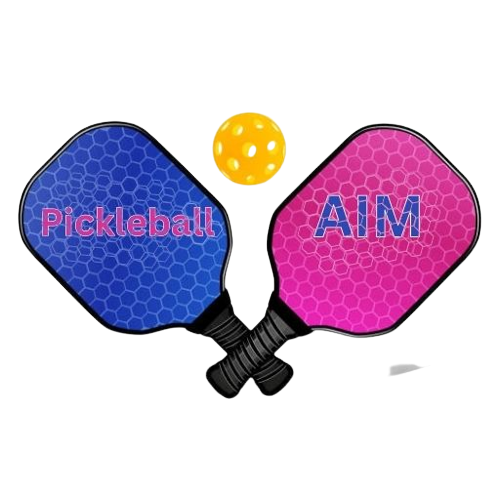
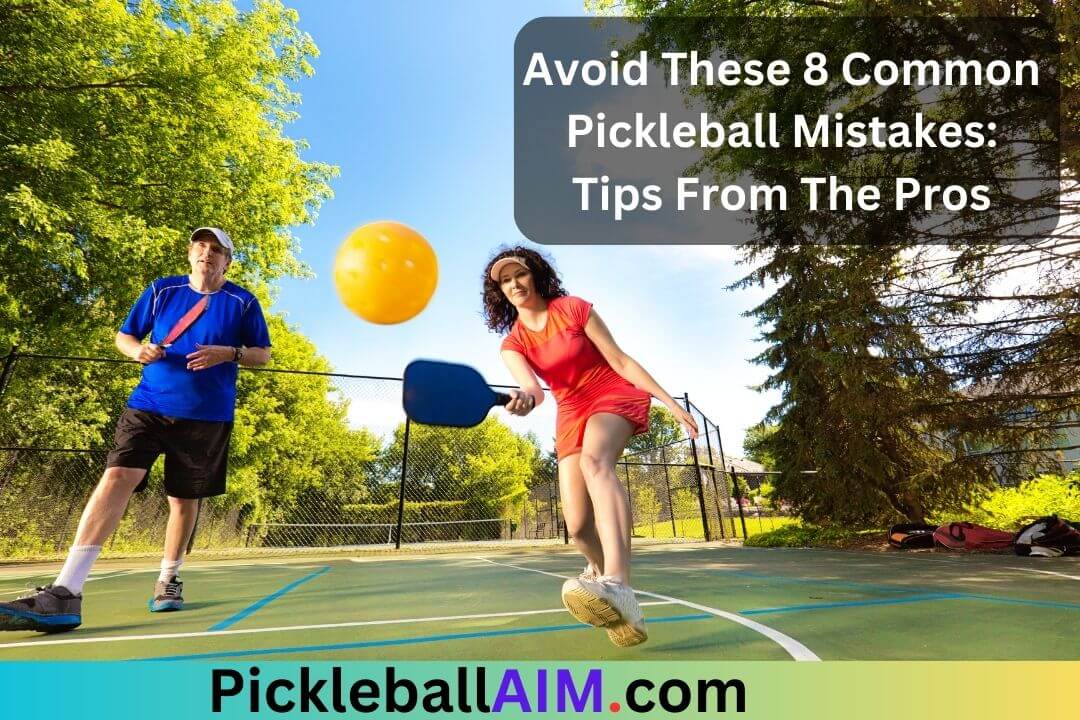

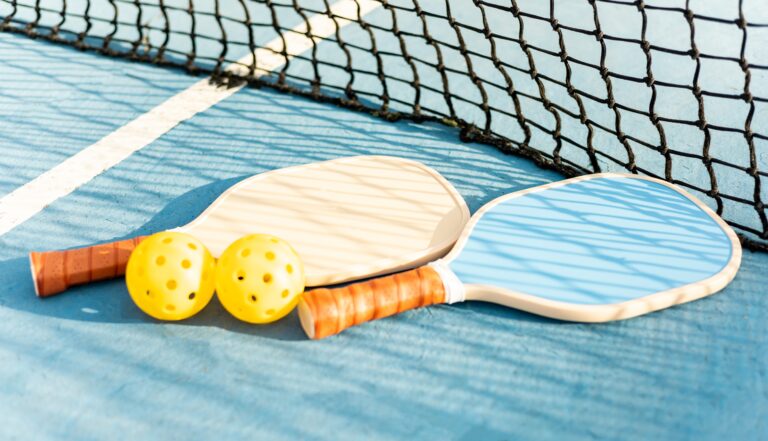


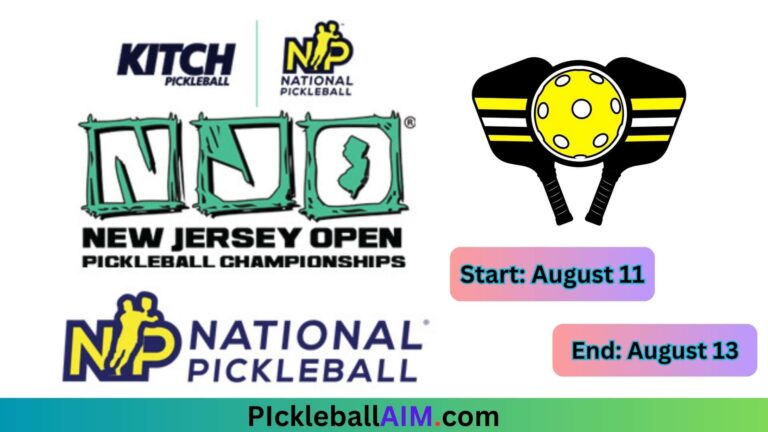
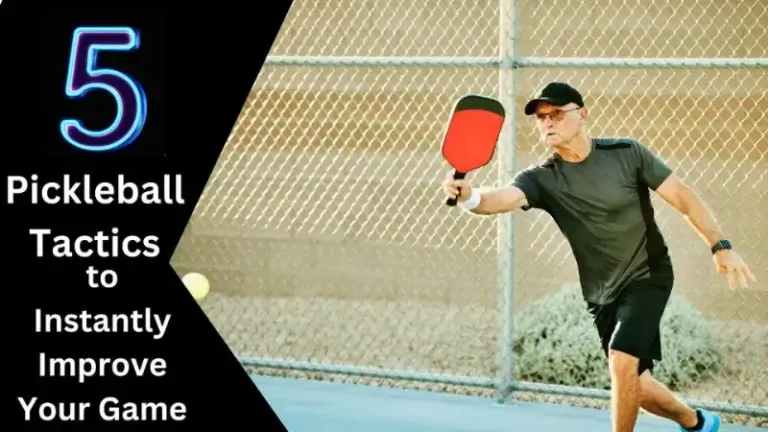
One Comment